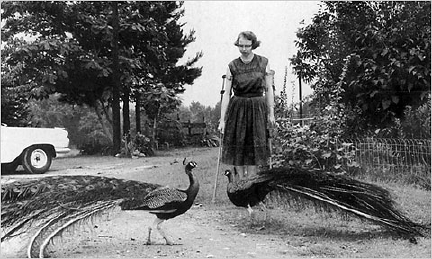Note: This interview was broadcast on the WGBH sister stations WCAI/WNAN, and also on KUT, in Austin, Texas!
Tom Perrotta, author of the novels Mrs. Fletcher, Little Children, Election, The Abstinence Teacher and The Leftovers, speaks with ThoughtCast about a writer who fascinates, irritates and inspires him: Flannery O’Connor.

His relationship with her borders on kinship, and he admires and admonishes her as he would a family member, with whom he shares a bond both genetic and cultural.
When asked to choose a specific piece of writing that’s had a significant impact on him, Tom chose O’Connor’s short story Good Country People, but then he threw in two others — Everything that Rises Must Converge and Revelation. As Tom explains, these three stories chart O’Connor’s careful trajectory, her unique vision, and her genius.
Click here  (30 minutes) to listen!
(30 minutes) to listen!
This interview is the second in a new ThoughtCast series which examines a specific piece of writing — be it a poem, play, novel, short story, work of non-fiction or scrap of papyrus — that’s had a significant influence on the interviewee, that’s shaped and moved them.
Up next: Harvard Classicist Gregory Nagy on Homer’s Iliad, and the final, fatal battle between Hector and Achilles.
Podcast: Play in new window | Download
Subscribe: RSS

Flannery O’Connor may have had a gift. But apart from her lupus, beginning at age 25, she was never far from the depths of her pain and the cognitive distress she experienced.
Few to none of American 20th century writers presented such challenging psychiatric symptoms. Interestingly, Roman Catholics and not a few evangelicals look past her suffering and symptoms to see some sort of beatific vision in her writing. Sadly, her impulse to write was the vehicle for her striking out at her pain (people were incidental) living in a lonely, cold world only with the company of her distant mother and a few pea fowl.
But this really is a psychiatric exercise of projection by those mentioned above not to see this disturbed person, tortured by an illness given to her by that which she wished to venerate, but to project their religious assumptions upon her. Grade them C minus for analysis!
How striking for prominent authors to grandly use her suffering to project their religious notions… with such little self-awareness… upon her.
She worked out her pain and her redemption with help of a nearby priest and a few correspondents who with a whole lot of commentators who demonstrate very little ability to relate her pain to those stories into which she projected it! Lupus was the source of her pain and her art!
Terrific interview. Thanks for sharing it. Those interested in more on O’Connor should take a look at the most recent edition of Shenandoah, an issue devoted to O’Connor.
Her stories and two novels blew my young mind in 12th grade … and thirty years later I did all I could to place an O’Connor epigraph on as many pages I could on my rookie teachers diary, A Dixie Diary, at http://www.adixiediary.com. Thank you, Flannery, for all you did … and all you do for us still.